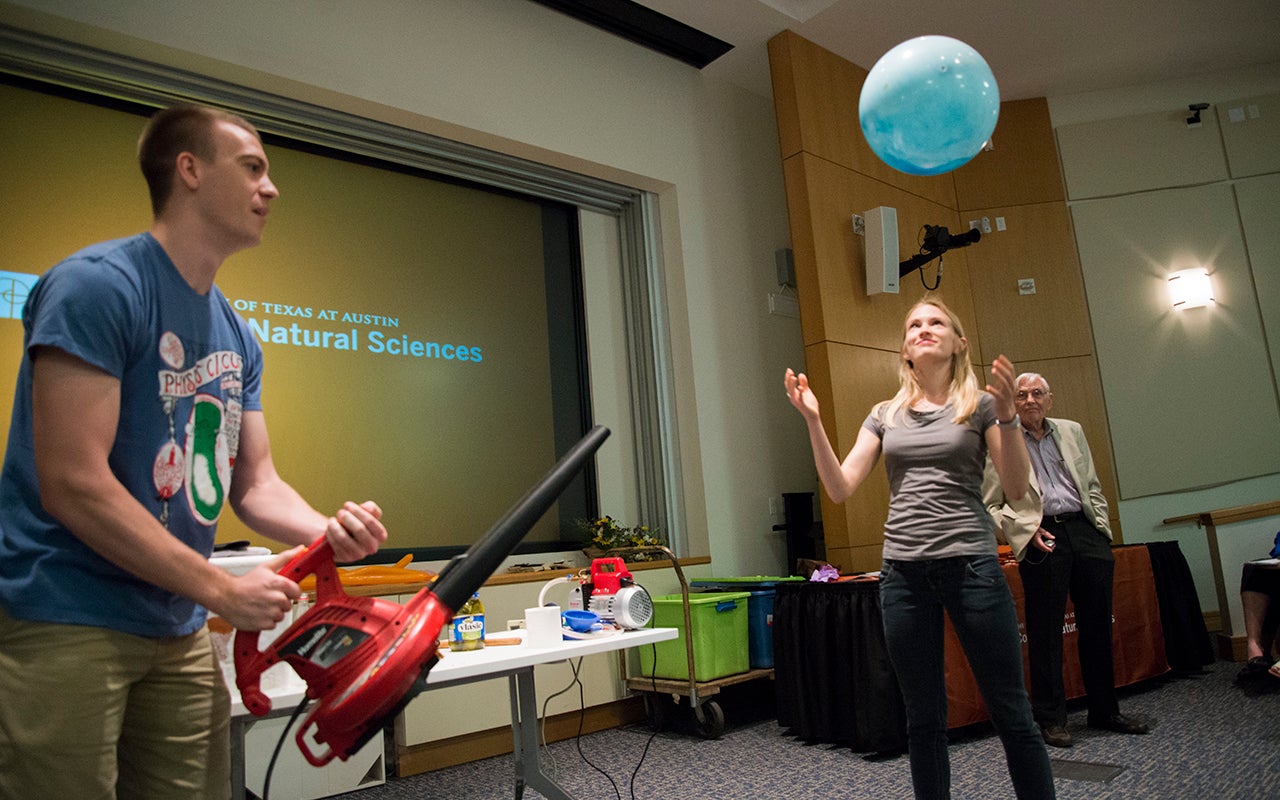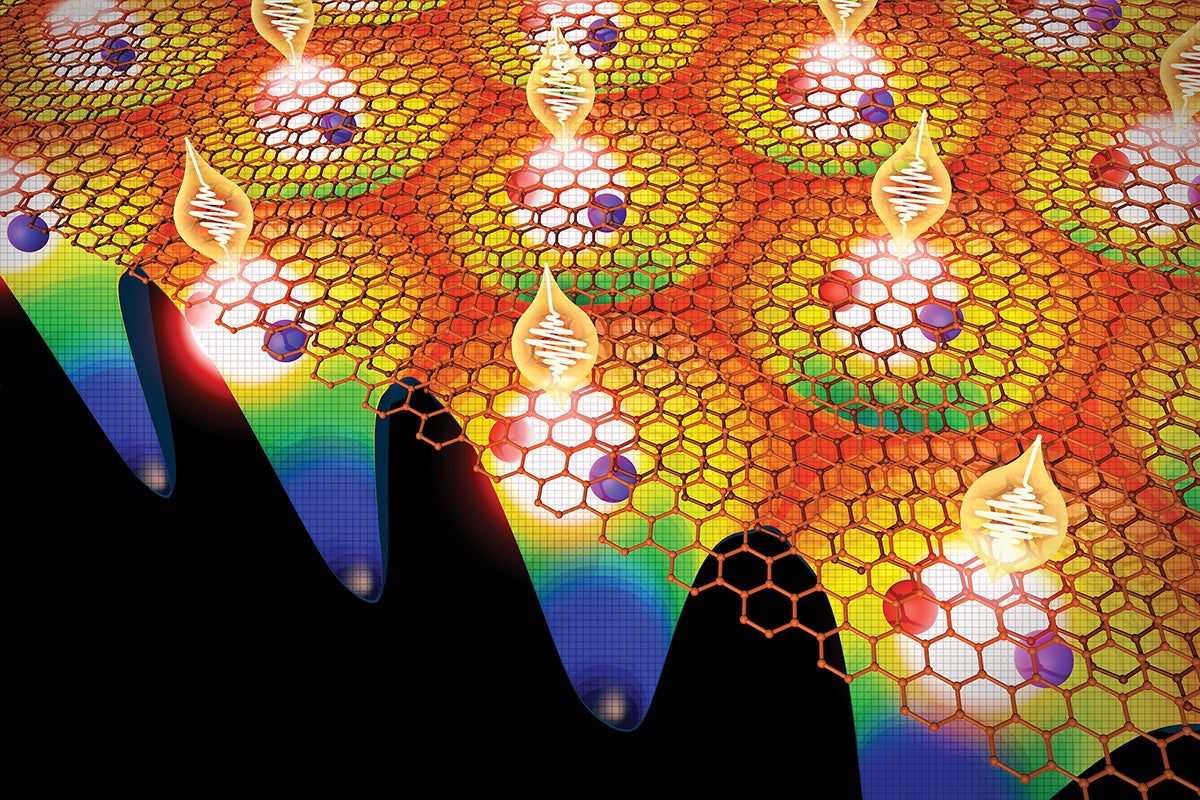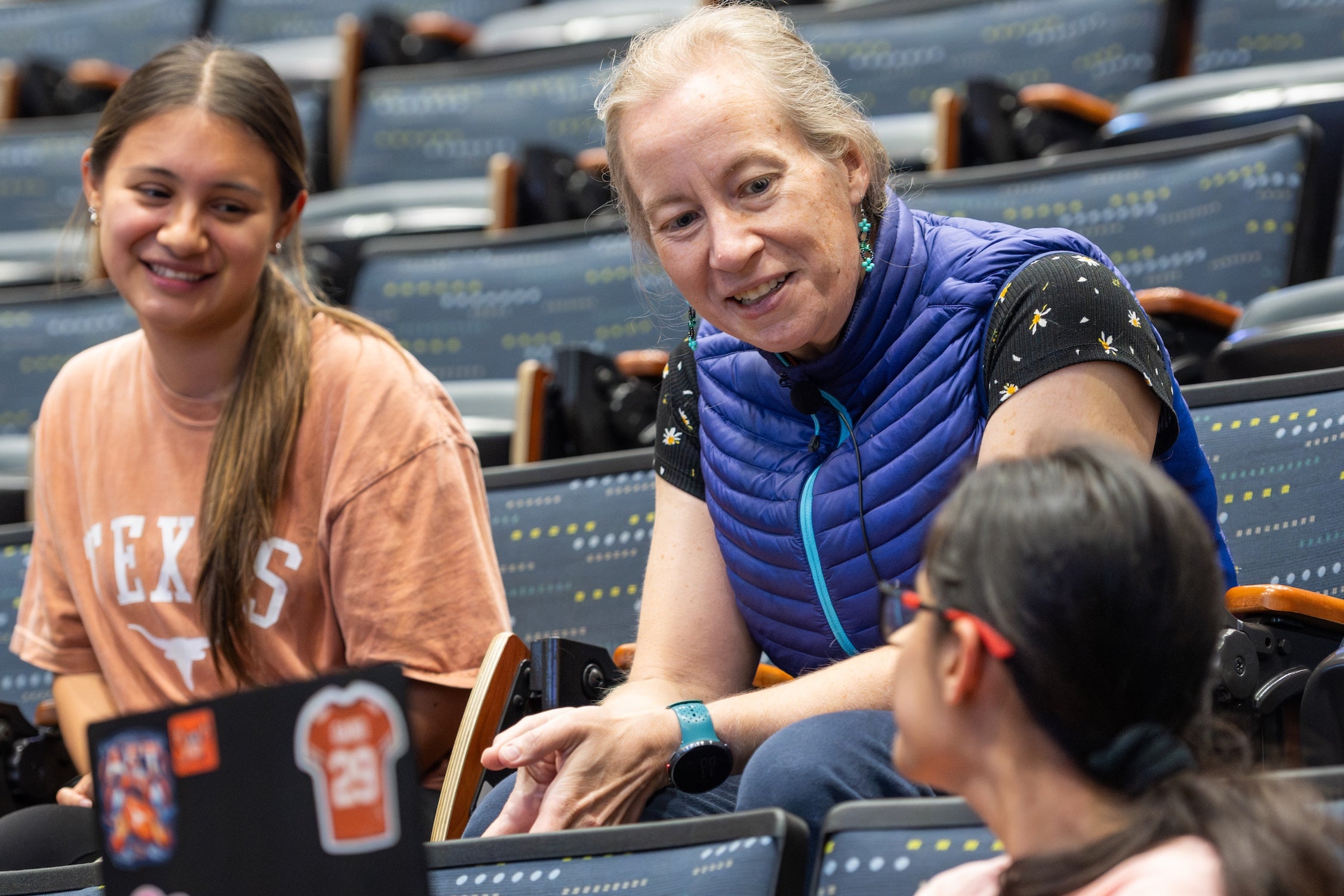Grad Students Lead the Greatest Show in Classical Physics
Glowing electric pickles, flaming money, and flying toilet paper help the Physics Circus at The University of Texas at Austin teach science to non-physicists, especially school children. Now a new matching gift will make it possible to maintain the program and its legacy, so that thousands more young students can benefit from the Circus fun.

Tess Bernard demonstrates what happens when air in a balloon is cooled in liquid nitrogen.
The Austin M. Gleeson Endowed Excellence Fund for Physics Outreach celebrates a key figure behind the Physics Circus—and his lifelong commitment to service, including a special passion for sharing the wonder and fun of physics with elementary school students in the greater Austin community. Former students and friends have created a $205,000 matching opportunity between now and August 1, 2018, so that supporters can double the impact of their gift in support of a program that’s led by students and performed for children at no cost to schools. Gleeson, who has led a revival of the Physics Circus and served as faculty advisor for the program since 2005, is a driving force behind a program that’s made up of a team of physics graduate students, who travel to elementary and middle schools, enthralling and educating young minds, as they give children a glimpse into the wonders of science.
With roots that date back to the 1970s, the Physics Circus today performs for hundreds of school children annually. Graduate students Tess Bernard, Tom Hartsfield, Scott Luedtke and Jeremy Paster work in pairs, performing several shows a week at elementary and middle schools, at no cost to the schools.
Ladies and Gentlemen . . .
A typical performance may kick off with Luedtke sharing an insight like this one:
“Einstein once said that anybody who wonders why something happens is a scientist. If you’ve ever wondered why the sky is blue or why your little brother or sister is so annoying, then that makes you a scientist. So science isn’t just for people in ivory towers. It’s really for everybody to study and enjoy.”
The performers then proceed to amaze the children with feats of physics. They may hammer a nail into a board with a frozen banana or make a beach ball levitate. All the while, they engage students using rapid-fire banter and asking the children what they think is going on with each experiment.
The shows have proven so popular that the team was booked solid for the spring semester by mid-February.
The Physics Circus in its current form has served the community for a decade, but its origins extend much farther back.

Scott Luedtke uses a leaf blower to lower the air pressure above a ball, causing it to levitate over Tess Bernard. Austin Gleeson observes from the sidelines.
The Three-Ring Circus
The circus first sprang into existence because of a missing movie.
In the early 1970s, the physics department held a physics film series for the public that was overseen by professor Rory Coker. When the films didn’t arrive one week, Coker, who remembered hearing about a physics demonstration circus, suggested to another professor, Karl Trappe, that they try something similar.
The show was well-received and became a once-a-semester offering for the general public, designed to appeal to parents and college students, as well as young children.
“The audience for those public circuses never dwindled away,” said Coker. “We always had to turn away half the people that showed up.”
Austin Gleeson loved the circus idea and began to perform his own version as an end-of-year treat for his classes, and Trappe later joined forces with another physics faculty member, Jack Turner, to create the Traveling Physics Circus. The pair went to local schools and performed demonstrations geared towards a younger audience and quickly made a name for themselves, even appearing on the David Letterman show in 1987.
The Show Must Go on
Some of these different circuses wound down over the years. However, Gleeson felt that the traveling part of the circus was too important to let disappear without a fight. He advocated for starting the program up again, this time using students.
In 2005, graduate student Becky Thompson accepted a position with the department to take the physics circus to local schools again after the program had been on hiatus.
The student-run circus proved to be a great success and grew to include four half-time students.
Gleeson insists that he barely has to lift a finger to manage the circus, saying that it manages itself.

Jeremy Paster attempts to hammer a nail with a frozen banana as Tom Hartsfield warily holds the nail.
Run Away with the Circus
The circus inspires not just the children, but the graduate students as well. Two former performers have been motivated by their time in the circus to continue to do outreach for a living.
Becky Thompson is now head of public outreach for the American Physical Society (APS). In this role she heads up a website called Physics Central, writes a comic book called Spectra, works with astronauts doing physics demos in space, and generally works at promoting physics to the world.
“It was not exactly what I thought I would be doing with my Ph.D.,” said Thompson, “but it is absolutely awesome.”
Thompson’s outreach is decidedly different from her years at the circus. She now reaches an international audience and the APS program helps promote outreach programs around the world through mini-grants.
“I learned a lot of skills from physics circus that I apply to my job - how to communicate, how to connect with an audience, how to explain complicated physics in a way that they can understand,” said Thompson.
Katie Hinko, who took over the physics circus when Thompson graduated, is now at the University of Colorado Boulder, where she is the Director of Outreach for the physics department and for JILA, a National Science Foundation Physics Frontier Center. She also is conducting research into outreach efforts’ effects, as a senior research associate in the Physics Education Research Group and as Principal Investigator on an informal science education grant that funds research into programs like the physics circus.
“I do research on how students learn and how they get excited about physics and want to become physicists,” said Hinko, who credits the circus with solidifying an important concept. “It is the responsibility of myself as a physicist – and I believe of all physicists – to give back to the community. We have to pay it forward and talk about what’s great about our work.”
It’s a sentiment shared by Gleeson, when discussing why he has fought for the circus these past few years, “You know, you wouldn’t be a physicist if you weren’t interested in the importance of science to mankind.”



